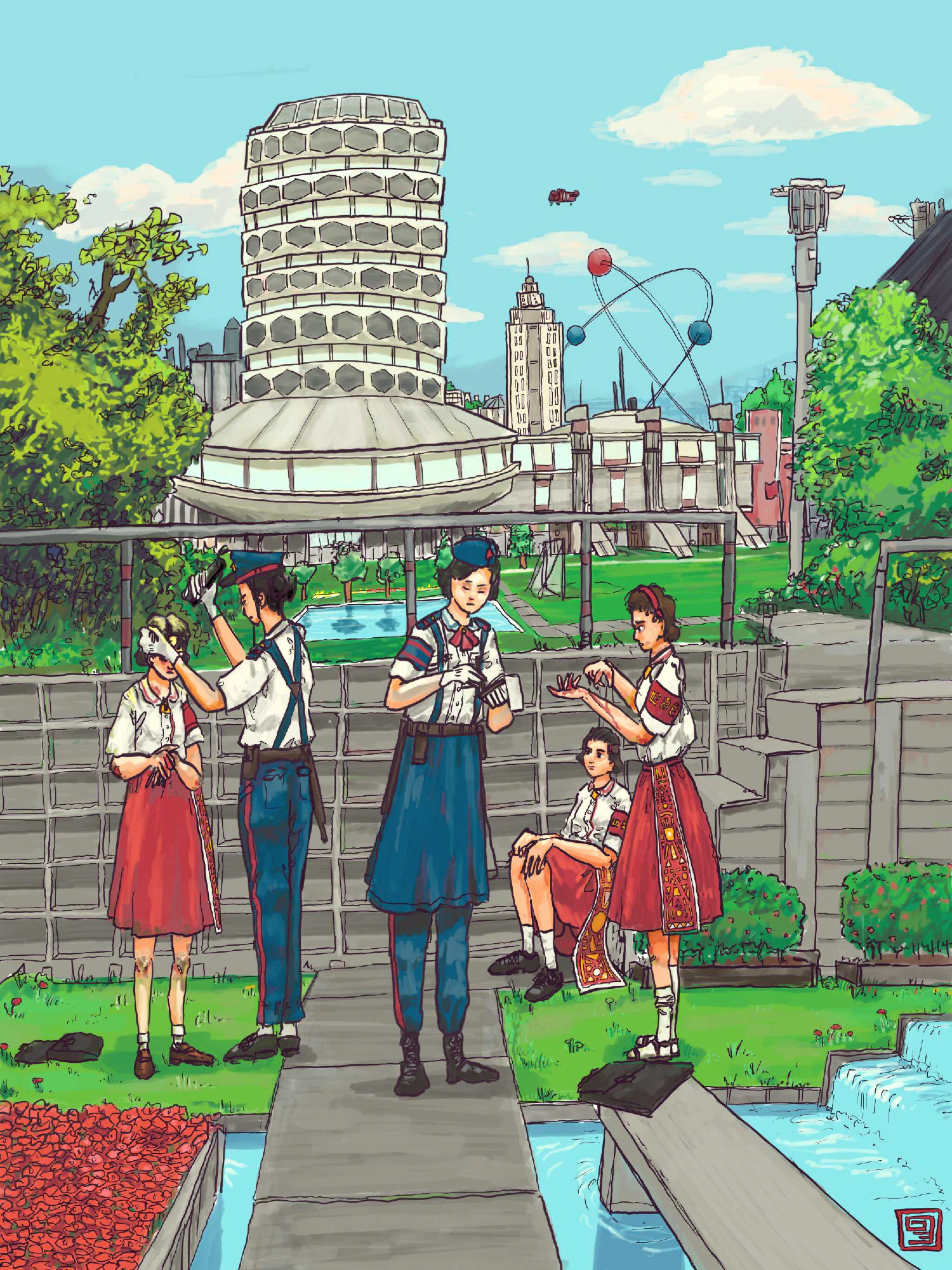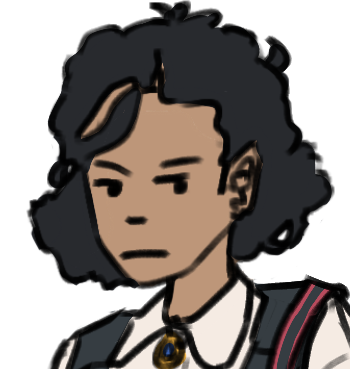NEW Story: Sunday Morning
On Childhood and Modernity

This article is not part of Vekllei canon. It may be old, obsolete or just a bit of fun.
Because the other girls would not stop calling her a lesbian, and because they had realised she was scared of loud noises and made use of that fact, Tzipora struck this bitch and her friend out beyond the football pitches after school. Tzipora was a good fighter — on her side is viciousness and a conviction to fight. That’s usually enough for most teen-agers, who like the idea of fighting but are unprepared for the unglamorous reality of it. But those things do not make up for being short and underweight, and the two older girls had her bleeding on the ground by the time two passing community police-officers pulled them apart.
As an officer examined Tzipora’s head with a torch to find the bleeding in her scalp, one of the girls was desperately explaining that Tzipora had swung first and out of nowhere. Tzipora had nothing for her defence, since it was true and since she did not speak to cops, but the policewomen figured it out for themselves easily enough. Tzipora had been beaten savagely in her foolhardy attempt to get back at her bullies, and her pitiful state made the girl’s desperate blame-passing petty and childish. Although she might have lost the fight, she was not bothered again by the two older girls.
Part of the difficulty in understanding Vekllei as a foreigner is in the basic assumptions we make through the lens of modernity. Vekllei has not discovered ‘landscape’, and it has not discovered ‘the Child’.
Now, children have existed since ever, but we live in an age of modernity and commodity — of nuclear power and department stores. The concept of the ‘child’ as we currently identify and understand it did not exist prior to a certain time, in which the rapid accessibility of both industrial goods and luxury in society stripped children of their productive relationships with family and labour, and introduced them to the beast that would become modern schooling. As Kojin Karatani writes about the Meiji Restoration:
… It becomes clear that the grouping of children by age in the compulsory educational system of modern Japan signified the uprooting of children, as abstract and homogenous entities, from productive relations, social classes, and communities that had previously been their concrete contexts.
Now, Vekllei is not Japan. Vekllei is caught, instead, between a spectre of modernity and the myth of its past. At once socialistic and deeply conservative, the intuition of the common Vekllei person is going to be fundamentally different to a person acclimatised to foreign society.
Vekllei has a modern compulsory education system like much else of the world, but the way in which Petticoat society is coloured by Upen forces a strange compromise between modernity and Vekllei’s agrarian past. Tzipora, for example, shares a classroom with students both older and younger than herself. Boys and girls wear a single uniform, shared with teachers, all the way from kindergarten to university. Compulsory school operates only three or four days a week and lasts only for a few hours. Work and play, in addition to education, have always been essential parts of childhood in the country and modern schooling has accommodated that. By the time a child is a teen-ager, the person has essentially transitioned into young-adulthood.
By sexual maturation, a Vekllei person has essentially transitioned to young-adulthood and submerged themselves in the productive relations of the adult age; they often leave school for work, they quickly drift to mature, independent relationships with parents, and generally marry young.
The consequence of this idea is that Vekllei people often attend some sort of school for most of their lives. Whether trade schools for work or adult learning institutions for personal curiosity, it is very common to fill the many free hours of a Vekllei person’s week with education of some kind.
This is not to mislead the reader into imagining adults and children mixing freely, either in compulsory schooling or wider society. Adults do not attend compulsory schools and the median age of a classroom rarely deviates more than a few years either side. But from the perspective of the child, growing up in Vekllei desegregates children from one-another and introduces them to mature economic and social relationships early on, allowing in theory real liberty to choose and work for your lifestyle in the country.
-– This scene takes place in a Kadesoinan park, as indicated by the offerings bench and concrete paths snaking through water. In the distance is the Lola Neighbourhood School, with its central classroom tower standing six stories high. In the city beyond is Atomic Park and its distinctive, massive sculpture.
I’m still feeling out my ideas on this piece, and I’ll update this post as I figure it out. If you have any questions, that would help me out! Check out www.vekllei.city fer more, or follow my reddit profile.
